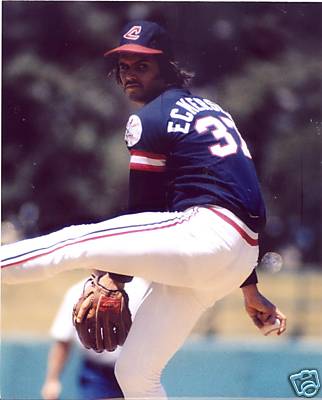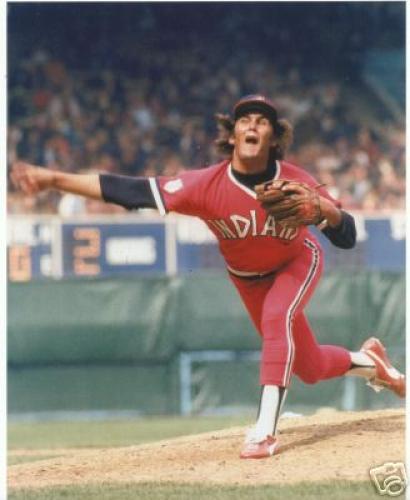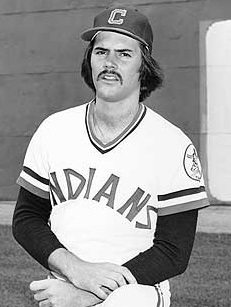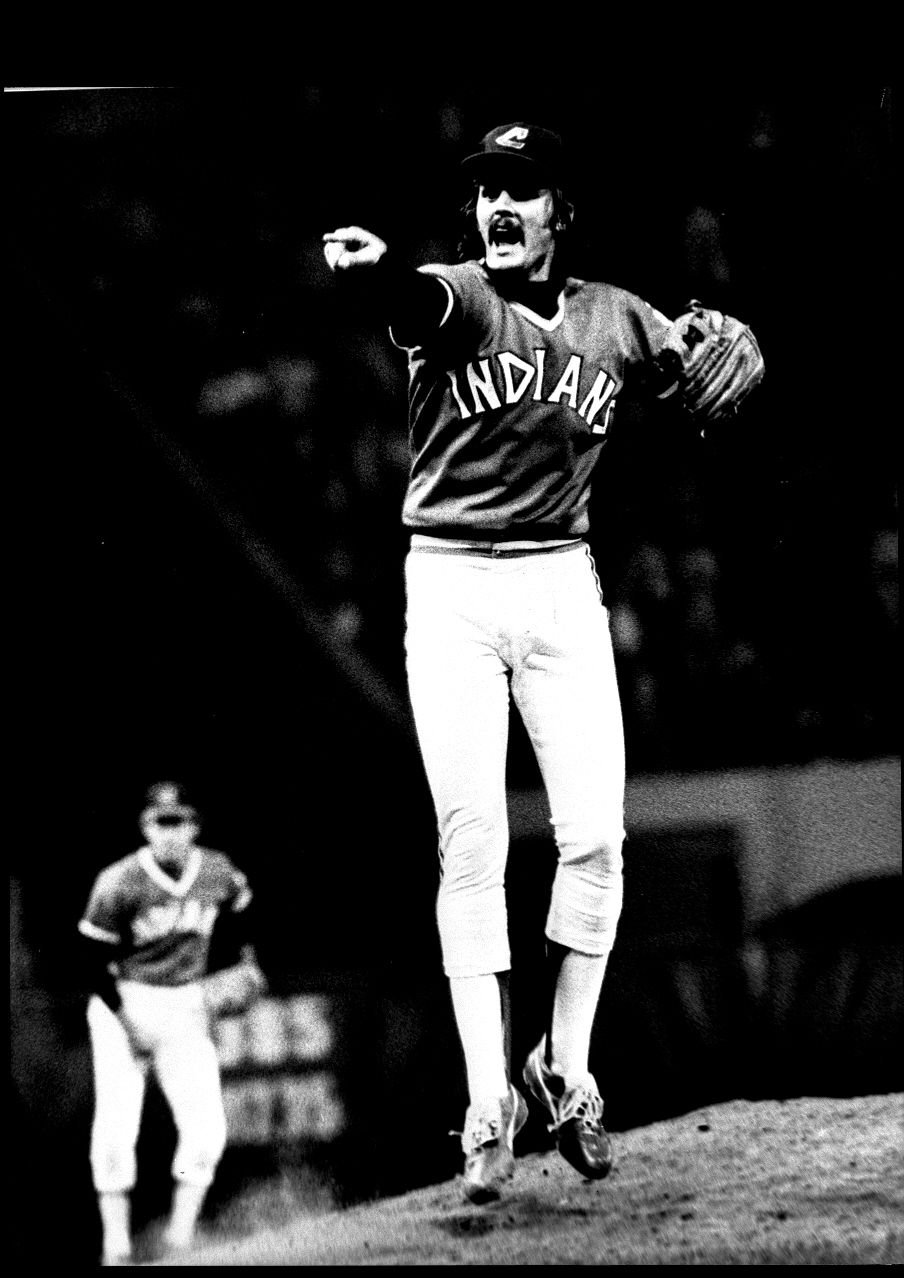 Indians Archive
Indians Archive  Top Cleveland Sports Figures, By The Numbers- #37 (Plus a Quiz!)
Top Cleveland Sports Figures, By The Numbers- #37 (Plus a Quiz!)
 This is one installment in a team effort by The Cleveland Fan, highlighting the top local sports figures by jersey number. Please weigh in with your thoughts, in the Boards. As David Letterman would say, “For entertainment purposes only; please, no wagering.”
This is one installment in a team effort by The Cleveland Fan, highlighting the top local sports figures by jersey number. Please weigh in with your thoughts, in the Boards. As David Letterman would say, “For entertainment purposes only; please, no wagering.”
Municipal Stadium sure holds some great childhood memories for me.
But 1994 saw the dawning of an exciting era in Cleveland sports history. Would the new Indians ballpark be as special as everyone hoped? It would be judged on the national stage, and that meant a lot to me in those days. The first new ‘retro' styled park, Oriole Park at Camden Yards, had opened a couple seasons earlier to rave reviews. I was hoping that Jacobs Field would give the city a much-needed source of respect and admiration.
When we arrived at the new ballpark for a game vs. the Oakland A‘s, my mother presented my brother and me with a gift: we were going to broadcast an inning of the game from a broadcaster's booth behind the plate. How cool was that? When the time approached, we took our places at the table with the mics. There was a sound guy behind us, ready to tape our call of the game. There were some papers with names and stats on the table, but we were too excited to treat our experience as though we were rehearsing for a real gig.
We couldn't believe that this place was actually in Cleveland, Ohio. Everything about the park was clean and colorful. All of the seats seemed close to the field. In the booth to our left, 10 feet away through the Plexiglas, was former Tribe catcher Ray Fosse, by now a genial A's announcer.
Everyone who followed Baseball knew Fosse's story: he came up in 1970 as a rookie All-Star Tribe catcher who hit for power and average, and was barreled into by Pete Rose in a play at the plate in the All-Star game in Cincinnati that same year. His career was essentially ruined as a result of that collision.
We wondered: what must be going through Fosse's mind right now? When he played for the Indians, they were a franchise that was broke and had no hope of competing. A dim, damp, vacant, dreary stadium was their home. Now, they were poised to bully their way to the playoffs with an all-star-type lineup while playing to sellout crowds in a sparkling new gem of a ballpark.
 Eventually, our conversation turned to A's pitcher Dennis Eckersley. My brother recalled a game we'd attended back at "The Stadium" in 1977. Eck, then in his third season, was the Tribe's starter vs. the California Angels. 13,500 fans were in attendance. I learned later that Eckersley was talking smack with opposing starter Frank Tanana throughout the game. Once, he pointed to the on-deck batter and shouted, "You're next!" -incredibly, he was still pitching to the previous batter, working on an 0-2 count! My brother (12 years old at the time) remembered thinking how boring the game was- the only scoring of the game was Duane Kuiper being bunted home after tripling in the first inning. He'd changed his tune as the crowd's murmur over the "no-no" in progress eventually blossomed into the animated living and dying with each pitch, with each out. By the time Eckersley struck out Gil Flores to end the 1-0 game, the entire crowd was in a frenzy. My brother remembered that I wanted to run out onto the field and "grab some turf" (hey, that's what fans did in those days), and of course our mother was having none of that. But what a game. And Eck was in the midst of a 22+ inning no-hit streak. When Dennis Eckersley was on, he dominated.
Eventually, our conversation turned to A's pitcher Dennis Eckersley. My brother recalled a game we'd attended back at "The Stadium" in 1977. Eck, then in his third season, was the Tribe's starter vs. the California Angels. 13,500 fans were in attendance. I learned later that Eckersley was talking smack with opposing starter Frank Tanana throughout the game. Once, he pointed to the on-deck batter and shouted, "You're next!" -incredibly, he was still pitching to the previous batter, working on an 0-2 count! My brother (12 years old at the time) remembered thinking how boring the game was- the only scoring of the game was Duane Kuiper being bunted home after tripling in the first inning. He'd changed his tune as the crowd's murmur over the "no-no" in progress eventually blossomed into the animated living and dying with each pitch, with each out. By the time Eckersley struck out Gil Flores to end the 1-0 game, the entire crowd was in a frenzy. My brother remembered that I wanted to run out onto the field and "grab some turf" (hey, that's what fans did in those days), and of course our mother was having none of that. But what a game. And Eck was in the midst of a 22+ inning no-hit streak. When Dennis Eckersley was on, he dominated.
The catcher for Eckersley's no-hitter? It was Ray Fosse, back for a short time with the Tribe. Prior to the 1976 season, he'd been purchased - from the Oakland A's.
Eckersley was a fun guy to follow during his career. He has been acknowledged as the originator of the "walk off" phrase, as in "walk off home run". He and Cleveland teammate Pat Dobson had their own baseball jargon, known to some as DialEckt. Some of the jargon is still widely used. An example of DialEckt: "'cheese' (fastball), ‘yakker' (curveball), ‘kitchen' (inside pitch) and ‘kudo' (the bow a batter takes when he bails out). All of this led to Eck's pithy pronouncement on his craft: "Pitching is simple: cheese for the kitchen and a yakker for the kudo"." (Sports Illustrated, Peter Gammons, 12/12/88)
However, Dennis Eckersley also was haunted by some demons in those days. He was an alcoholic who drank to excess after games. In the spring of 1978, at the ripe age of 23, Eckersley learned that he was being traded to the Boston Red Sox. That same day, he was told by his first wife that she didn't love him any more.
 His Cleveland roommate had been Rick Manning, a multi-tooled outfielder with Jacoby Ellsbury-type potential. Eckersley soon learned that while an injured Manning had remained in Cleveland during Tribe road trips, he had begun having an affair with his wife. They were eventually married. Eckersley said later that he was hurt at first, but that they had gotten married while they were still too young. Others have marveled at how well Eckersley has handled this double betrayal throughout his life.
His Cleveland roommate had been Rick Manning, a multi-tooled outfielder with Jacoby Ellsbury-type potential. Eckersley soon learned that while an injured Manning had remained in Cleveland during Tribe road trips, he had begun having an affair with his wife. They were eventually married. Eckersley said later that he was hurt at first, but that they had gotten married while they were still too young. Others have marveled at how well Eckersley has handled this double betrayal throughout his life.
Eckersley bounced from Boston, to the Cubs, and then to his hometown of Oakland in 1987, the year in which he decided to seek help with his alcoholism. Manager Tony LaRussa and pitching coach Dave Duncan turned him into a closer for the A's, and Eckersley's career skyrocketed. On a team with the power of Jose Canseco and Mark McGwire, Dennis Eckersley was the confident foundation. He was at the top of his game, at last.
Dennis Eckersley helped the Oakland A's win a World Series Championship. He's one of a handful of pitchers who can boast of having thrown a no-hitter and also of having pitched a 40-save season. He finished his career just 3 wins short of 200, and he totaled 390 saves. He was elected to Baseball's Hall of Fame in 2004.
Back on that spring day at The Jake in 1994, the Tribe once again flexed its muscle. A Carlos Baer(dddddd)ga (you know what I'm going for here) line drive juuust cleared the the fence in right center, and my brother and I remained in full ‘homer' mode as well, cheering and slapping hands. It was a blast.
Truthfully, my brother and I may have understood some of what Ray Fosse may have been thinking about these Cleveland Indians. The team and its new ballpark were admired throughout Baseball as top-notch. As had been predicted by a Tribe front office exec decades before, the fan base had been a "sleeping giant", and was now awakened. Perhaps Fosse's sentiment was that which was visibly voiced by Dennis Eckersley at The Jake during the 1995 season. When Manny Ramirez hit a two-out, two-run home run off of Eckersley in the bottom of the 12th inning to win a 5-4 game , the packed house rocked. While Manny trotted the base paths as the baseball cleared the left-field bleachers, Eck famously mouthed: "Wow!"
Here is a Cleveland #37 quiz. Answers are below the photo.
1) This Browns safety was a second round draft choice in 1984, out of Oklahoma State.
2) This Browns safety was a fourth round pick in 1990, out of Michigan State.
3) This Browns safety was mainly a standout special teams player. A crowd favorite just prior to the shameful move of the Browns to Baltimore.
4) This Browns safety was a fourth round pick in 2001. Was signed as an unrestricted free agent by the Cowboys in 2005.
5) This Tribe pitching prospect may be major-league ready. His first big league strikeout came against now-Indian Mark Reynolds.
6) This Tribe starter could have been our featured #37 Cleveland sports figure of all time. Was an Indian for ten seasons, ending in 2010. Came to Cleveland as a prospect, in a deal that sent David Justice to the New York Yankees.
7) Pitched for the Indians in the late 1990s. In the 1997 postseason, had a tough series against the Yankees. However, would likely have been the World Series MVP, if Jose Mesa's sphincter had not cramped.
8) Was traded in the horrible deal that brought slugger and fan favorite Rocky Colavito back to Cleveland. His name is synonymous with a famous career-saving arm surgery, in which one arm ligament is replaced with another.
9) A talented ball player who patrolled center field for the Indians from 1958-1960. A sufferer of a bipolar disorder. Career was marked by several troubling episodes.
10) His number of 14 is retired by the Indians. Wore 37 for a short time.

1) Chris Rockins
2) Harlon Barnett
3) Bennie Thompson
4) Anthony Henry
5) Cody Allen
6) Jake Westbrook
7) Chad Ogea
8) Tommy John
9) Jimmy Piersall
10) Larry Doby
- NBA Announces 2013-2014 Schedule
- Browns Ink Sharknado
- Sharknado A No-Show For Rookie Camp
- Trent Richardson Out Until Training Camp
- Browns Sign Brandon Jackson
- Carrasco Suspended Eight Games
- Browns Add to Wide Receiver Depth with David Nelson
- Browns Need to Learn from Past Draft Mistakes
- Browns Release Chris Gocong and Usama Young
- Browns Missing on Grimes Disappointing, But Not The End
The TCF Forums
- Chris Grant's first 3 drafts
Kingpin74 (Tuesday, January 21 2014 10:13 AM) - The 2014 Offseason Thread
googleeph2 (Tuesday, January 21 2014 9:36 AM) - 2015 Recruiting
furls (Tuesday, January 21 2014 6:57 AM) - Mike Brown
YahooFanChicago (Monday, January 20 2014 11:15 PM) - Movies coming out
HoodooMan (Monday, January 20 2014 9:34 PM) - 2014 Hoops Hockey Hijinx
jpd1224 (Monday, January 20 2014 4:44 PM) - 2014 Recruiting
jclvd_23 (Monday, January 20 2014 2:26 PM) - Wish List - #4 Pick
Hikohadon (Monday, January 20 2014 1:26 PM) - Official- Browns Coach Search/Rumors
OldDawg (Sunday, January 19 2014 6:48 PM) - #1 overall pick Anthony Bennett
TouchEmAllTime (Sunday, January 19 2014 1:28 PM)



